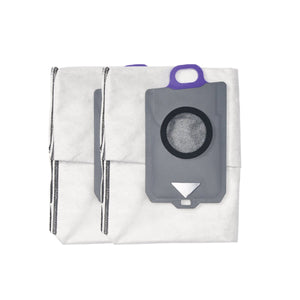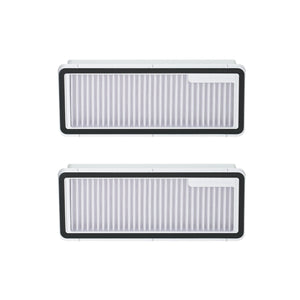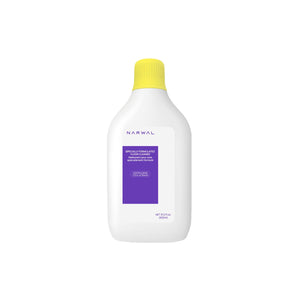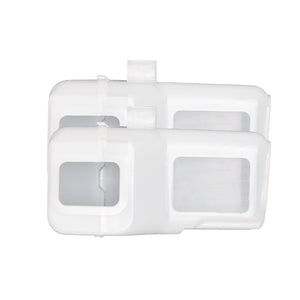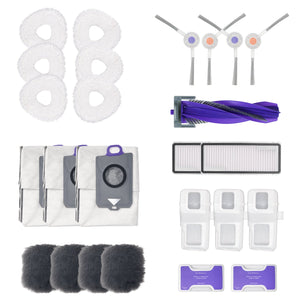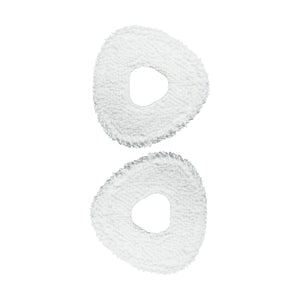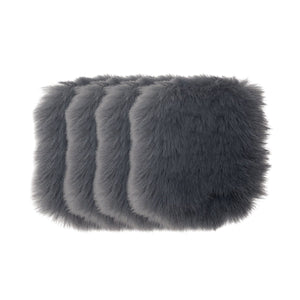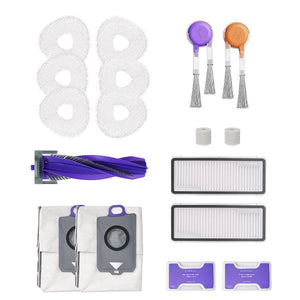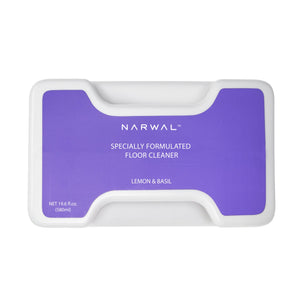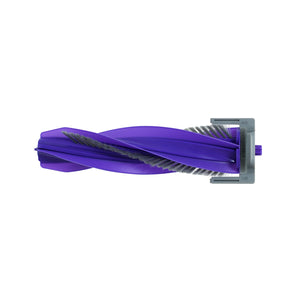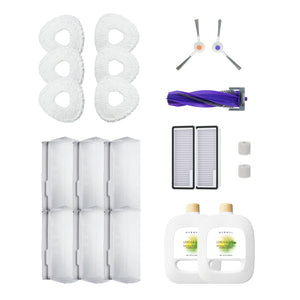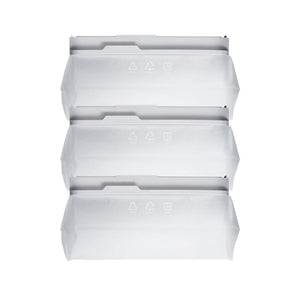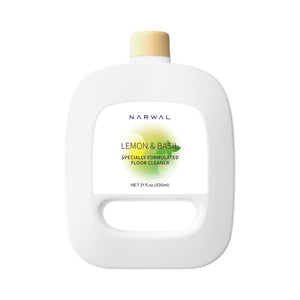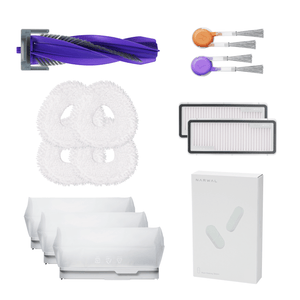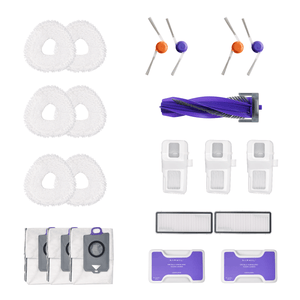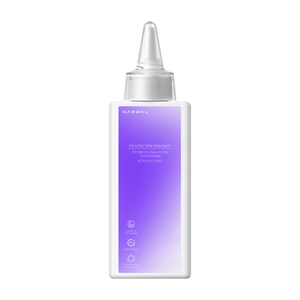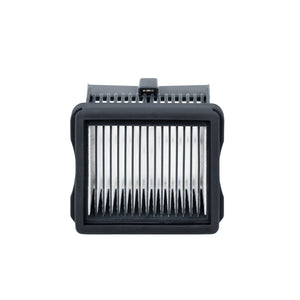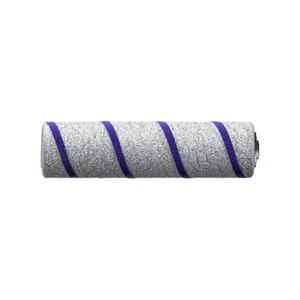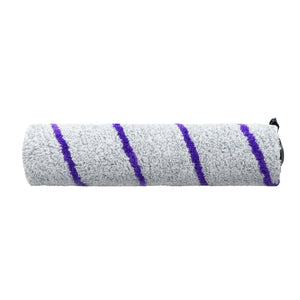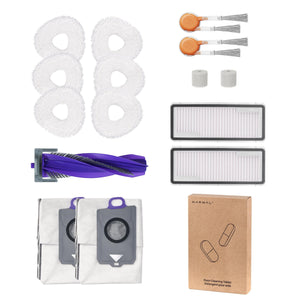No, you should not vacuum cat litter with your regular vacuum. While it may seem like a quick solution, doing so can damage your vacuum or clog the filters.
Cat litter can be tough on your cleaning equipment, and it’s important to understand the best methods for handling it. In this article, we’ll explore the risks of vacuuming litter, provide alternative cleaning methods, and recommend some of the best solutions for a cleaner home and healthier vacuum.
Is It Safe To Vacuum Cat Litter Or Will It Damage Your Vacuum?
The short answer is yes, cat litter can indeed damage your regular household vacuum cleaner. Here’s a comprehensive list of reasons why you should avoid using your standard vacuum to clean up cat litter:
-
Abrasive Particles: Some types of cat litter, particularly those made from clay or silica, contain sharp, abrasive particles. These can scratch and wear down the internal components of your vacuum, including the hose, brushes, and filters.
-
Clumping Issues: Cat litter often forms clumps when it comes into contact with moisture, such as cat urine. These clumps can get stuck in the vacuum hose or other parts of the machine, leading to blockages and reduced suction power.
-
Concrete-Like Hardness: When clumped cat litter dries, it can harden into a concrete-like substance. Vacuuming these hardened clumps is akin to sucking up small rocks, which can cause significant damage to the vacuum's motor and other mechanical parts.
-
Filter Clogging: The fine dust from cat litter can easily clog the filters of your vacuum cleaner. This not only reduces the efficiency of the vacuum but can also lead to overheating and potential motor failure.
-
Odor Accumulation: Cat litter dust and leftover clumps can accumulate inside the vacuum, leading to unpleasant odors that can permeate your home every time you use the vacuum.
-
Moisture Damage: If the cat litter is damp or wet, it can introduce moisture into the vacuum cleaner. This moisture can damage electrical components and promote the growth of mold and bacteria inside the machine.
-
Bacterial Contamination: Cat feces and urine can contain harmful bacteria. Vacuuming these materials can spread bacteria throughout your home and inside the vacuum, posing a health risk.
-
Reduced Lifespan: Regularly vacuuming cat litter can significantly shorten the lifespan of your vacuum cleaner due to the cumulative damage from abrasion, clogs, and moisture.
-
Difficulty in Cleaning: Removing cat litter from the vacuum can be a messy and time-consuming process. It often requires disassembling parts of the vacuum to clean out clumps and dust thoroughly.
-
Inefficiency: Standard vacuums are not designed to handle the specific challenges posed by cat litter. They may struggle to pick up all the litter, leaving behind residue that you’ll need to clean up manually.
What Types of Vacuums are Ideal for Cat Litter?
Bagged vacuums are usually safer because the bags can trap fine litter particles effectively. This reduces the risk of clogging or damaging the motor.
Bagless vacuums often use cyclone filtering systems to separate dust and debris. However, when it comes to cat litter, especially fine-grain types, these filters may not be efficient enough.
A vacuum with a high-quality HEPA filter is better for handling fine particles like cat litter.
Can You Vacuum Cat Litter Safely? Practical Tips That Actually Work
Step 1: Use the Right Vacuum
Make sure you are using a vacuum that is designed for pet owners or can handle fine particles like cat litter. A vacuum with strong suction and a HEPA filter is ideal because it can trap small dust particles and prevent them from clogging the machine.
Step 2: Prepare the Vacuum
Before you begin, empty your vacuum's canister or bag. This gives the vacuum more space to handle the litter and prevents it from clogging quickly. Check the filters to ensure they are clean and ready to trap fine dust. This will improve the vacuum’s performance and reduce the risk of damage.
Step 3: Attach the Right Tool
Use a wide, non-motorized attachment for vacuuming litter. Crevice tools or brush attachments might get clogged with litter particles. A simple floor attachment or nozzle works best for picking up litter without causing jams.
Step 4: Vacuum Small Amounts at a Time
Don’t try to vacuum large piles of cat litter at once. Only vacuum small amounts and stray particles around the litter box. Large quantities can overwhelm the vacuum and clog the filters. For larger spills, it's best to sweep up the majority first before using the vacuum for the remaining dust.
Step 5: Avoid Wet or Clumping Litter
Never vacuum wet or clumping litter. When litter becomes damp, it can harden and stick inside your vacuum’s hose or motor, causing blockages. Always ensure the area is dry before using the vacuum.
Step 6: Clean the Vacuum After Use
Once you’ve finished vacuuming, empty the canister or bag immediately. This prevents the fine particles from settling and clogging the vacuum over time. Also, clean the filters regularly to keep your vacuum working properly and extend its lifespan.
Vacuum For Cat Litter: Common Problems And Safety Precautions
Watch Out for Water and Clumping
Cat litter that has absorbed moisture, such as from water or humidity, can easily clump together. The clumping litter may block the vacuum’s hose or other components, reducing its suction power and efficiency.
The water inside the vacuum’s dust bin or storage area also can cause the litter to stick and harden, leading to more problems.
Smell Issues
Another issue to consider when vacuuming cat litter is the smell. Cat litter can trap odors, and when vacuumed, those smells might linger inside the vacuum cleaner. To avoid this, clean or replace the vacuum filters regularly if you choose to vacuum cat litter.
Why Won’t My Vacuum Pick Up Kitty Litter?
Most vacuums struggle with kitty litter because the suction is too weak, the wrong brush head is used, or the system is clogged. If your machine can’t handle it, switch to a vacuum for cat litter with strong suction and a flat floor tool. Always check for clogs in the hose and filters, and avoid using motorized brushes that scatter the litter. A dedicated cat litter vacuum or a model designed for pet messes will solve the problem more effectively.
Cat Litter on Carpet: Cleaning Tips
Never start by vacuuming a full pile of litter on carpet. Large clumps can harden and damage your machine. Instead, follow a simple process.
First, scoop up the big pieces by hand or use a stiff brush. This removes most of the weight and prevents blockages. Next, run a strong vacuum for cat litter on carpet. Go slow, use high suction, and keep the brush clean so it can lift granules from the fibers. Models like the Narwal Flow with CarpetFocus technology or Narwal Freo Z Ultra adapt suction to carpets and raise the mop to keep them dry, making them safe and effective for this task.
If odor lingers, finish with a pet-safe carpet cleaner or baking soda treatment. Sprinkle, let it sit, then vacuum again. This extra step keeps your carpet fresh and extends the life of your vacuum.
In short: pick up first, vacuum second, deodorize last. With the right tool—ideally the best vacuum for cat litter on carpet—you’ll save time and avoid damage to your cleaner.
Best Vacuum For Cat Litter: Which Models Work Safely And Effectively
Vacuuming cat litter is not as simple as it looks. Regular vacuums often clog, scatter debris, or wear down quickly when faced with hard litter granules. The right cat litter vacuum must be strong enough to pick up particles, yet safe enough to avoid long-term damage. Here are the models that stand out for safety, performance, and real-world use.
Robot Vacuums for Cat Litter
If you want a hands-free option, the Narwal Flow is one of the best robot vacuums for cat litter. With 22,000Pa suction and CarpetFocus technology, it removes litter from both hard floors and carpets without leaving residue. Its FlowWash system self-cleans the mop and sensors in real time, so dust and litter do not interfere with performance.
[cta:flow-robot-vacuum-and-mop]
The Narwal Freo Z Ultra also delivers excellent results. Its dual RGB cameras and LiDAR navigation let it recognize and avoid scattered litter while maintaining powerful suction. Both models are designed for pet owners who need reliable cleaning every day.
[cta:narwal-freo-z-ultra-robot-vacuum-mop]
Cordless and Handheld Vacuums
For quick cleanups near the litter box, a cordless vacuum is practical. The Narwal S20 Pro is often considered the best handheld vacuum for cat litter because it combines strong suction with a lightweight design. Its self-cleaning mop function also prevents odor buildup.
[cta:narwal-s20-pro-vacuum-mop]
Outside Narwal, the Dyson V15 Detect is another strong contender. Its laser light reveals fine dust, making it easier to spot and remove scattered particles on hard floors.
Upright Vacuums for Carpets
If your main concern is litter on carpet, an upright is usually the best vacuum for cat litter on carpet. The Shark Stratos Upright provides deep suction and a self-cleaning brushroll that prevents tangles from hair and debris. This makes it ideal for multi-pet households.
The best vacuum for cat litter depends on your cleaning style. Narwal’s Flow and Freo Z Ultra are perfect for automated, daily cleaning. The S20 Pro and Dyson V15 give you control for quick spot cleanups. And for carpet-heavy homes, Shark upright models provide the strongest performance. With the right vacuum, cat litter mess no longer has to be a daily headache.
Can You Vacuum Cat Litter With a Dyson?
Yes, a Dyson can pick up small amounts of cat litter, but it’s not the best vacuum for cat litter. The sharp and clumping particles may clog the filter, damage the brush, or leave odors inside the machine. For safer and more effective results, models like Narwal Flow with 22,000Pa suction and self-cleaning, or the cordless Narwal S20 Pro, are designed to handle litter without clogging or odor build-up.
Best Ways To Stop Cat Litter Scatter Without Ruining Your Vacuum
Use a High-Sided Litter Box
A litter box with high sides can help contain litter when your cat digs or kicks it out. This is an easy way to prevent litter from scattering around the box.
Place a Litter Mat Under the Box
A litter-catching mat placed under the box can trap any stray litter that gets stuck on your cat’s paws. This stops it from being tracked all over the house.
Regularly Scoop the Litter Box
Keeping the litter box clean reduces the chances of your cat scattering litter. Scoop the box at least once a day to minimize messes.
Best Alternatives To A Cat Litter Vacuum: Simple Tools That Work
If you're not ready to invest in a specialized vacuum for cat litter, don’t worry—there are plenty of alternatives to keep your home clean and odor-free. Here are some practical options:
-
Broom and Dustpan: The classic combo! A sturdy broom and dustpan are perfect for quick cleanups. They’re affordable, easy to use, and don’t require any power. Just sweep up the litter and toss it in the trash.
-
Handheld Dustbuster: A small handheld vacuum designed for quick pickups can be a lifesaver for small messes. Look for one with strong suction and easy-to-clean filters.
-
Litter Trapping Mats: Place a litter-trapping mat under your cat’s litter box. These mats catch loose litter as your cat steps out, reducing the amount that gets tracked around your home.
-
Litter Box Enclosures: Enclosed litter boxes help contain the mess and prevent litter from scattering. Some even come with built-in mats or filters to minimize tracking and odor.
-
Litter Scoop with a Bag: Use a litter scoop to remove clumps and waste daily, and dispose of them in a sealed bag. This keeps the litter box clean and reduces the need for frequent vacuuming.
-
Robot Litter Boxes: While not a cleaning tool, self-cleaning litter boxes like the Litter Robot can significantly reduce the amount of litter mess you have to deal with. They automatically sift and dispose of waste, keeping the area cleaner.
-
Microfiber Mops: For hard floors, a microfiber mop can pick up stray litter and dust effectively. Pair it with a pet-safe cleaning solution for a fresh, clean finish.
-
Air Purifiers: While not a cleaning tool, an air purifier can help reduce dust and odors associated with cat litter, making your home feel fresher.
You don’t need a fancy vacuum to keep your home clean when you have a cat. From simple tools like brooms and dustpans to innovative solutions like litter-trapping mats and self-cleaning litter boxes, there’s an option for every budget and lifestyle.
FAQs
How Can You Remove Cat Urine Odor from a Vacuum Cleaner?
Cat litter mixed with urine can leave strong odors inside a vacuum. To fix this, empty the dustbin or bag immediately after use, wash or replace the filter, and wipe down the canister with a mild pet-safe cleaner. If the smell lingers, use a vacuum with a HEPA filter designed to trap odors and fine particles, such as a cat litter vacuum made for pet messes.
What Is the Right Way to Dispose of Cat Litter?
The safest way to dispose of used cat litter is to scoop it into a sealed bag and place it in your household trash. Never flush litter down the toilet, as it can clog pipes and damage plumbing. For better hygiene, tie the bag tightly to prevent dust and odor from spreading.
Can You Legally Throw Cat Litter Outdoors or in the Woods?
No, dumping cat litter outside is not safe, sanitary, or environmentally responsible. Cat feces can contain harmful bacteria like Toxoplasma gondii, which may contaminate soil and water. Always dispose of litter in sealed bags through your normal waste collection system.
Does Used Cat Litter Have Any Practical Uses?
In most cases, used cat litter should be discarded. However, some types of biodegradable litter (such as those made from wood or paper) can be composted if free of feces. Clay and clumping litters should never be reused, as they carry bacteria and create waste hazards.
Do Cats Really Dislike Vacuum Cleaners?
Yes, most cats dislike vacuums because of the loud noise and sudden movement. While this does not affect whether you can vacuum cat litter, it may cause stress for your pet. To minimize anxiety, keep your cat in another room while cleaning or choose a quieter model like the Narwal Flow, which runs as quietly as 39dB.
A Smarter Way to Handle Cat Litter Mess
Tired of worrying whether your vacuum can handle cat litter? Regular machines struggle with clogs, odors, and short lifespans, but you don’t have to compromise. Narwal Flow, Freo Z Ultra, and S20 Pro are designed to pick up fine litter particles, trap odors, and clean themselves so you never deal with hidden buildup.
If you want the best vacuum for cat litter that also tackles pet hair and everyday mess, Narwal models deliver. With powerful suction, self-cleaning technology, and quiet operation, they make litter cleanup safe and effortless. Ready for a cleaner home and a longer-lasting vacuum? Explore Narwal today.


















